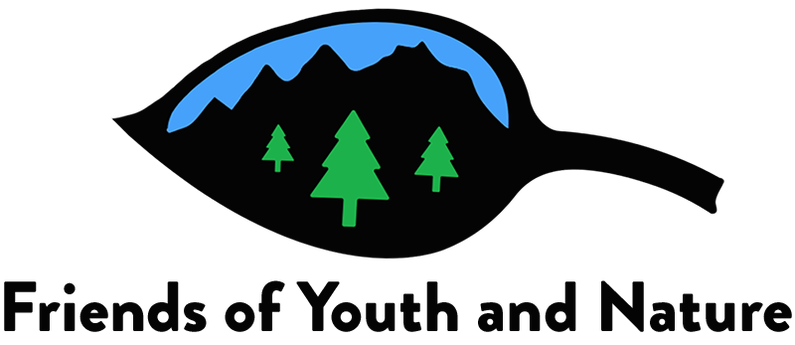|
Tips to help you connect your family to nature!
|
|
Students use a nature guide to help identify the bird in hand. The Black Canyon Audubon Society volunteers host a learning station featuring taxidermy bird specimens to help students learn about bird adaptations to their environment and food sources, and how to identify birds likely observed in their neighborhoods during the North Fork Conservation Days (Paonia). It’s a bit like speed dating for adults only this event involves quick learning interactions for kids. Springtime environmental education events are ways for elementary students to engage with natural resource experts to learn as much as possible in a short period. Each dedicated specialist has 20-25 minutes to engage elementary students about their area of expertise with hands-on activities and tips about their jobs. Students rotate through 8 to 9 stations in a day to learn about many topics, such as how forests contribute to healthy watersheds, how various aquatic insects indicate water quality, what kinds of items can be recycled, and much more. Montrose, Grand Junction, and the North Fork Valley all have festivals organized and sponsored by many organizations, partners, and volunteers who work together to provide this opportunity for the youth of these communities.
Presenters, mostly natural resources experts from various agencies, explain aspects of their field that most kids, and even some adults, never think about. As an added bonus, students get insights into various natural resource careers. “These can be defining moments for young minds that may influence their choices for a lifelong passion or a future career path,” says Anita Evans of Friends of Youth and Nature, one of the funding contributors to the event. For the last 30 years, fourth graders from the Uncompahgre Valley have attended the Montrose event organized by the Shavano Conservation District. The Natural Resource Festival (previously known as the Water Festival) draws approximately 450 -500 students each year. This May students headed to Baldridge Park for a full day of fun learning activities. “Classes rotate through 9 learning stations, out of 29 featured at the festival, and engage in activities that demonstrate the connections between their lives and the resources they depend on. Activities are focused on all of our natural resources, with an emphasis on water connections in their lives,” explains Mendy Stewart, Education Specialist for the Shavano Conservation District, and festival organizer. “The activities are meant to be ‘hands-on’, where kids really get in the mix of things,” Stewart added. A wide array of resource topics and activities are featured such as: demonstrating how river water is treated before being sent to our faucets, making play-dough watersheds and determining where the rivers and lakes form after a simulated rainstorm, making your own recycled paper, panning for silver while learning about Colorado’s Mining history with the Colorado Department of Reclamation and Mine Safety, practicing moving water through irrigation pipes with the Uncompahgre Valley Water Users, measuring the flow of a nearby stream with a Colorado Water Commissioner and putting their math minds to work figuring the rate of flow in cubic feet per second (cfs). Other activities help kids to learn things like “Leave No Trace” and how to minimize impacts when exploring nature. The Colorado State Forestry Department sets up an experiment where students predict the amount and quality of rainwater runoff between two watersheds (actually dirt-filled culverts), one with plants and one with bare soil. After predicting the outcome of a rainstorm, the students learn how plant cover works to slow runoff, so it can be absorbed within the watershed. “This is a huge benefit to water quality, catching soil and pollutants before they reach rivers,” explains Tanya Banulis, Colorado State forester. Dave Dearstyne, retired Natural Resource Conservation Service (NRCS) soil scientist, focuses students’ attention on detecting some of the millions of microorganisms living in our soil. Who would think to look that closely at dirt? This event involves a lot of planning and behind-the scenes work such as pre-festival classroom presentations and festival logistics. The festival's successes are attributed to the dedication of Stewart and the supporting host agency, the Shavano Valley Conservation District. Festival supplies, student transportation, and festival planning are made possible through matching funds to the Shavano Conservation District received from the Colorado State Conservation Board. The goal of this program is to help Conservation Districts in Colorado implement conservation projects and educational activities. In addition to the festival, the funds have also made conservation education available to San Miguel, Ouray, and Montrose County students. The activities also include source pollution presentations, 9th grade Mancos Shale Soil Salinity Experiments, and 5th and 6th grade conservation poster contests. Stewart says these events, “...inspire learning opportunities for Western Slope students who will be part of an outdoor savvy generation. We hope they will be empowered to use what they learn to influence future decisions about land and water uses that benefit our planet now and in the future.” Some kids take time to reflect about what they learned during the festivals; others are super excited and cannot stop talking about the day. Parents or relatives can encourage more discussion or help reinforce significant concepts kids learned. Ask your child what learning station impressed them the most? Here are a few questions that will help you start a discussion with your student: What can you tell me about the Gunnison or Colorado River’s journey to the ocean? What type of water bugs will you find in your favorite fishing spot? How fast is the river near you flowing this spring? What are the components of a beehive? How can you harness solar power? Can you use it to make a fruit smoothie or baked good? What should you put into your community’s recycle bins? What foods are produced locally and where can you find them? Friends of Youth and Nature is a non-profit promoting opportunities for youth and families to get outside, experience outdoor activities, and explore nature. Your donations as well as grants received by FOYAN from the Gunnison Basin Roundtable (DNR- Colorado Water Conservation Board) and Forever Our Rivers (Connecting Rivers and Communities) have enabled FOYAN to contribute funding for these festivals.
1 Comment
Wherever you are, you are standing in a watershed! But, how do you explain a watershed to a 9 year old? Observation is a good start. A roof catches the water from a rain storm and as it runs off the roof, it flows into gutters, drainpipes and eventually into a barrel, or a storm drain in the street. Now, imagine the hillsides of a big valley being the roof of a shed, and the melting snow runs down the slopes into small streams eventually flowing into larger rivers. The area of land encompassing the hillsides is referred to as the watershed. From a bird’s eye view, drainage patterns in a watershed resemble a network similar to the branching pattern of a tree. Tributaries, similar to twigs and small branches, flow into streams, the main branches of the tree eventually to the larger tree trunk. Like all other branching patters (e.g., road maps, veins in a leaf), the drainage pattern consists of smaller channels merging into larger ones.
A watershed is an important concept! In the west, water availability depends on the amount of rain and snow throughout the year. In Colorado, the snowpack or total seasonal accumulation of snow on the ground is the predominant source of runoff supplying our major rivers with water. In this part of Colorado those rivers are: the Gunnison, the Uncompahgre, the San Miguel, the Dolores and of course the Colorado River. The last few back-to-back below average water years, started to build drought conditions which intensified with a dry spring and hot summer. Last summer was one of the driest years on record and created drought conditions that sparked some of the worst fires in our state history. Because of the consequences of drought, understanding and caring for our watershed becomes very important. Water availability is also dependent on the condition of the land within the watershed. Watershed health is a function of appropriate land uses which affect the amount infiltration, runoff, the quality of the water flowing into a river and ultimately what we drink! Local foresters often provide a very effective visual demonstration to help students understand how land use can affect water quality. Using 2 (half) culverts set on a slope, one with sod (substituting for trees shrubs, grasses) and the other with no plants, only soil; one student pours one gallon of water from the top of each culvert and their classmates capture the water that runs off the bottom of each culvert in a clear flask. Their observations? The water sample from the vegetated (sod) culvert is clear compared to the murky water sample from the non-vegetated culvert. Proof that vegetation slows down the runoff so the precipitation seeps into the soil. The roots of the plants function as a filter catching the sediments and nutrients, ultimately providing better quality water. Land use matters! Roads, housing developments, shopping malls, parking lots, timber harvesting, improper grazing and wildfires remove vegetation and can cause increased soil erosion which ultimately affects the quantity and quality of runoff within the watershed. Watersheds, river dynamics and western water management are such important concepts to understand that two non-profits and the Department of Natural Resources (DNR) have contributed funding to provide opportunities for students to learn about them. The mission of these entities are a bit different but all three encourage actions to protect our watersheds. “Forever Our Rivers” champions community engagement in river health, with efforts generating the interest, people power and funding needed for healthy river ways. “The Gunnison Round Table” (associated with DNR and the Colorado Water Conservation Board) is involved with water planning for current and future in-basin uses. Friends of Youth and Nature facilitates opportunities for youth to learn about the environment and become active stewards of our natural resources. All three have collaborated this year to establish funding to bring over 1200 students to events with interactive water learning activities on the Western Slope. “Water in the West” is the newest Colorado River Water interactive exhibit at the Eureka Science Museum in Grand Junction. The hydrology exhibit includes 12 different lessons about water, from turbulence and dissolved oxygen to measuring flow rate. Approximately 700 gallons of water flow through a 40- foot- long feature that mirrors the Colorado River. Water rushes through irrigation gates to orchards, flows through fish ladders, is diverted into dams and canals and is tubed away in a model of a transmountain diversion. A few weeks ago, fourth graders participated in the annual Montrose Natural Resource Festival sponsored by the Shavano Valley Conservation District. Groups of students rotated through stations where they learned about various natural resource concepts through demonstrations and hands-on activities led by resource specialists. Not surprisingly, many stations focused on aspects of water: Your Water – Your Watershed, explaining ways water users can cooperate to protect water resources (The Uncompahgre Watershed Partnership); The Importance of Trees in Our Watersheds (Montrose Forest Products) , A River Runs Through It – Simulating the dynamics of a river system in a big sandbox (Delta Conservation District), The Importance of Aquatic Invertebrates in the Food Chain (BLM/San Juan Mountain Association); The History of Colorado Water Laws and Why Measuring Flow is Important (Colorado Division of Water Resources), and, Preventing Pollution in our Watersheds (City of Montrose). The goal of these environmental education events is for our youth to learn how interconnected and complex our water systems are. The Colorado River Basin is huge, encompassing parts of seven U.S. states and two Mexican states. There are a myriad of land uses, and land conditions within this huge basin as it flows from its headwaters in the Rocky Mountains over 1400 miles into the mostly dry Colorado River Delta at the tip of the Gulf of California. Many people rely on that water for so many uses – drinking water, agriculture, industry, power, recreation and fish and wildlife habitats. Do we have enough water to share? How do you measure it? How do you decide how much everyone gets particularly in a drought? How is water stored? How much evaporates? Does dust on snow affect spring snow melt? How can you restore and protect watersheds? What are inner basin water transfers? Western Colorado students are introduced to a lot of concepts related to water in the west, and the more they know, the more questions they have! Mission accomplished- inspiring critical thinkers! Next time you have a conversation with a fourth grader, ask them why they think water in the west is so complicated? River Runner is a very cool water tool that tracks a raindrop anywhere in the contiguous United States! Watch where it ends up! Also, check out these fun watershed activities from Project WET (Water Education for Teachers)to demonstrate watershed concepts to students in the classroom: Color Me a Watershed Branching Out Make your own Watershed Cookies, Girl Scouts, and trout may seem like an unusual combination, but, last month, 18 Girl Scouts from Western Slope chapters became STREAM Girls. This Colorado Trout Unlimited workshop is designed to introduce youth to their local watershed through river conservation and recreation. STREAM stands for STEM, recreation and art. Ross Reels, Able Women, and the local Trout Unlimited (TU) chapter ̶ the Gunnison Gorge Anglers hosted the workshop.
The day started with an icebreaker where the girls were grouped by their favorite Girl Scout cookie. Barbara Luneau, TU youth programming volunteer, engaged the girls in a watershed discussion. She explained the path of our rivers from their headwaters to their terminus. The Uncompahgre and Gunnison Rivers are tributaries to the Colorado River, which comprises the third largest watershed in the country. The Columbia River Watershed is second, and the largest watershed in the U.S. is the Mississippi River. “Our rivers here are very hard working with many demands for drinking water, irrigation, livestock and recreation. These rivers are closely managed to meet everyone’s needs,” Luneau explained. “How much water do you think makes it to the Gulf of Mexico? Very little!” The new Colorado Outdoor facility in Montrose provided easy access to the Uncompahgre River, where the girls explored the river corridor. Volunteers guided the girls with probing questions to help them use all their senses to observe the nuances of the river and adjacent riparian habitats as if through the eyes of a scientist, angler, and artist. The girls described the river sounds and smells, and sketched their observations in their STREAM Girls field notebook. Ready to learn how to measure stream flows, the girls stepped into a small channel of the main river wearing hip waders. The scouts timed the travel of a ping-pong ball from a release point upstream to its catch by a scout 30 feet downstream, repeating this three times for an average. The girls rocked at the math, calculating channel area (average width and depth), velocity (distance and time), and finally flow in cubic feet per second. “This is math under pressure ̶ adding, dividing, and multiplying without a calculator!” said Luneau. Kick nets were next on the agenda. The girls stirred up the stream bottom with their feet so aquatic insects drifted into the nets. With giggles and laughter, the girls enthusiastically scuffled about while trying to keep their balance! They rinsed the nets into buckets, and transferred samples into trays for critter identification. Referencing an insect guide, the girls identified species by using characteristics like shape, tails, location of gills, and cases. Of course, this activity also required math skills to determine overall stream health using the diversity of specific bugs (Caddis flies, Mayflies and Stoneflies) and their abundance. Luneau explained that high numbers of these bugs, which are highly sensitive to pollution usually, indicate a healthy stream. Guess what? This section of the Uncompahgre River scored well! With a grasp of stream flows and aquatic insects, the girls had a better idea of where trout hang out and what they like to eat ̶ basics for a successful angler. This is where the Gunnison Gorge Anglers stepped in to help each girl set up her fly rod and learn to cast. The girls and instructors began casting around the pond. Each Scout looked like they were determinedly practicing the summoning charm from Harry Potter, “Accio -trout” that will magically bring whatever item is summoned. Fly fishing is all about tricking the fish into biting your artificial fly thinking it is the real thing, and the art of fly tying is to imitate the look of those tasty morsels. After identifying the common aquatic insects, the Scouts had a better idea of what those morsels look like. Now, sitting at a fly tying station, each scout was patiently guided by a CTU volunteer on how to tie a midge or a winged emerger. With quiet concentration, the girls carefully created art for fishing. To recap the day, the Scouts returned to the river to complete a scavenger hunt for the key ingredients of a stream, and began working on a necklace. Colored beads represented those key ingredients: water, wood, rocks, and plants with the added charms of mayflies, feathers, and bugs. Kate Senn from Ross Reels, a Girl Scout alumna, awarded the Scouts their new patch, and congratulated each with their special Scout handshake. What was their favorite part of the day? “Going into the water with the waders; … finding all the bugs; …being able to see what’s in the water,” were a few of their responses. The day undoubtedly inspired new, young anglers, but their experience of standing in the river and understanding the river dynamics will be remembered long and vividly. Kudos to all Colorado Stream Girls ̶ our rivers need more stewards. ___________________________________________________________________ Colorado Trout Unlimited provides a voice for our rivers. CTU works to conserve, protect, and restore Colorado’s coldwater fisheries and their watersheds. CTU offers a week long River Conservation and Fly Fishing Camp designed to educate 14 to 18 year old students. For more information visit: https://coloradotu.org/youthcamp. Gunnison Gorge Anglers, a chapter of CTU, hosts multiple activities including youth education, fly casting and fly tying lessons, and stream improvement projects. For more information visit: gunnisongorgeanglers.tu.org Able Women is a non-profit public outreach initiative designed to spread the word about fly fishing and the many emotional, physical, and spiritual benefits it brings to women. Find out more at: ablewomenflyfish.com |
Blogs for Summer! DIY Summer Camps A Summer backyard Bucket List Hiking with Children 101 Kids, Dogs and Hikes a Winning Combination Getting Outdoors is Easier than You Think Categories
All
Archive
Archives
July 2024
|

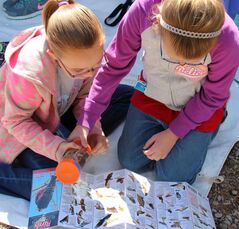
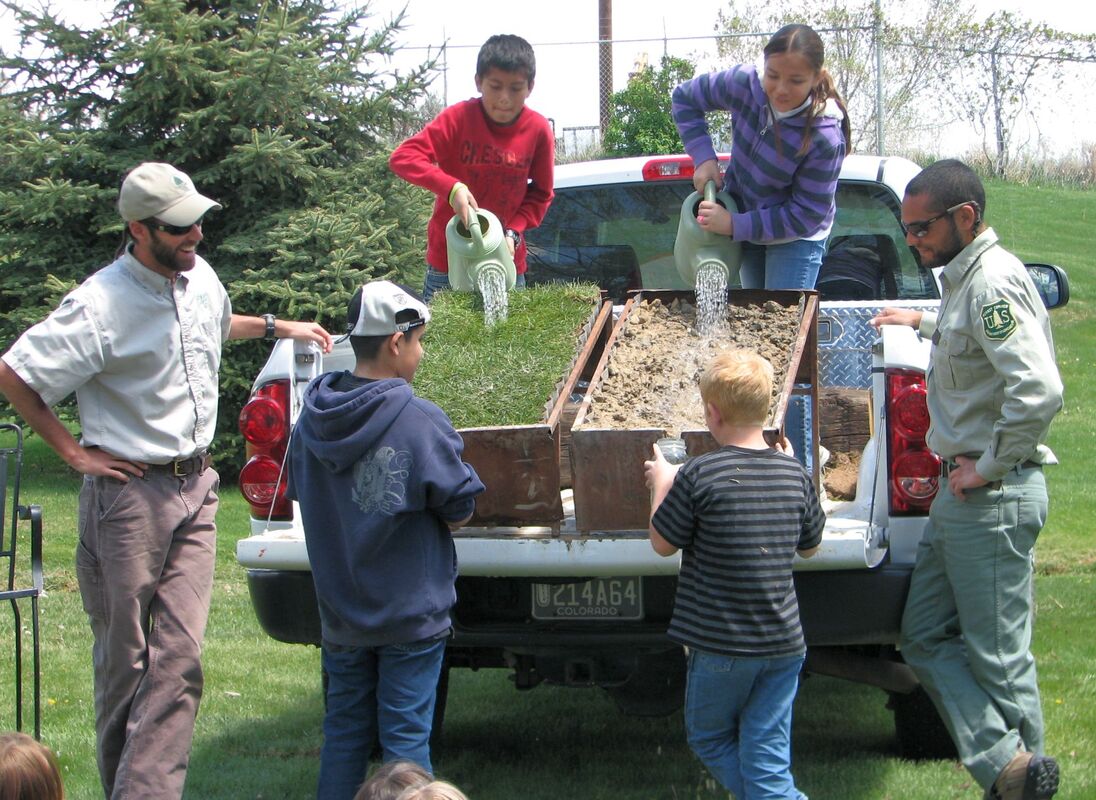
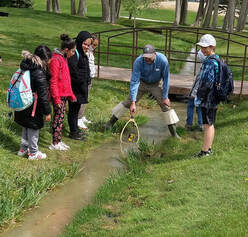
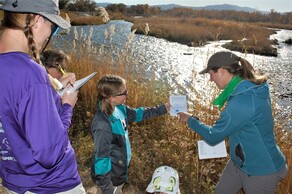

 RSS Feed
RSS Feed


